Texas officials warn of rolling blackouts to ease strain on power grid – the same strategy that led to 200 people’s deaths during massive winter storm in 2021
Texas officials have warned they may have to use rolling blackouts to ease pressure on the state’s power grid this winter, despite the same strategy resulting in more than 200 deaths during an earlier storm.
The Electric Reliability Council of Texas said it may have to implement controlled outages if temperatures dip below freezing for days, as they did in February 2021.
ERCOT ordered rolling power outages to meet rising demand, while Texans turned up the heat to cope with plummeting temperatures. Hundreds of people subsequently died.
At its peak, four million people were in the dark for a record 70.5 hours, after 365 generators were knocked offline due to the storm.
The situation was so dire that President Biden declared a state of emergency to free up federal aid for the Lone Star State.
The Electric Reliability Council of Texas said it may have to implement controlled power outages if the state sees a similar deep freeze to the one that crippled Texas by knocking out the power grid in February 2021.
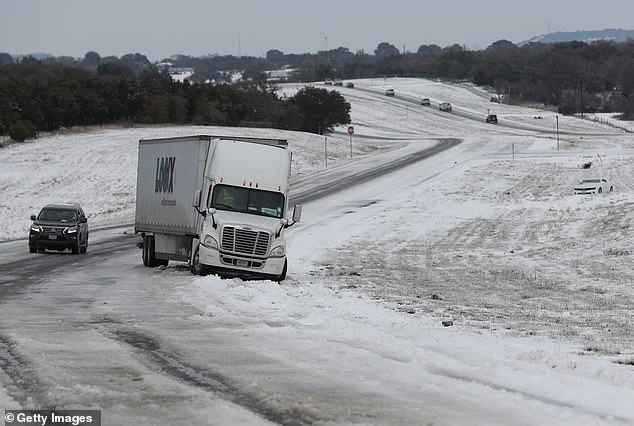
Plunging temperatures have plunged more than 4 million homes into darkness amid unprecedented ERCOT-declared power outages that have been linked to the deaths of more than 200 people during the cold snap
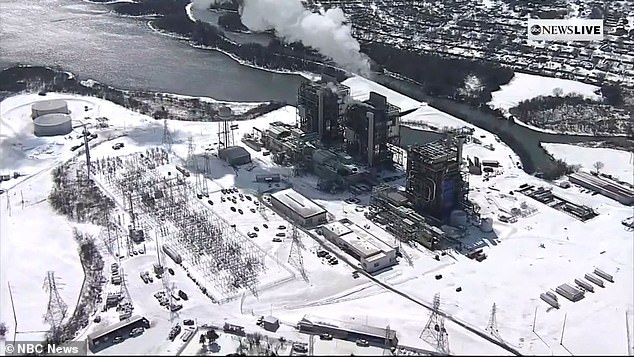
ERCOT has revealed it is weighing similar outages to manage power demand this winter, with outages most likely to occur at 8 a.m., when usage tends to be greatest as people wake up.
Now ERCOT has warned there is a 14.4 percent chance it will have to implement controlled outages in December, with the estimate rising to 16.8 percent in January.
The state operator said the power outage would most likely occur at 8 a.m., which coincides with when most people wake up and start using electricity.
The strategy has raised eyebrows as more than 200 people died after the February 2021 storm, with a large proportion of the deaths blamed on the power outages.
Deaths from hyperthermia were recorded due to indoor temperatures dropping to deadly lows, accidents and carbon monoxide poisonings, with people turning on heaters and grills in a desperate bid to stay warm.
The storm caused Texas to experience some of the coldest temperatures in more than 30 years, with some areas breaking records that were more than a century old.
It also closed the country’s largest oil refinery. Motiva said it has closed its Port Arthur, Texas, refinery due to “unprecedented” freezing conditions along the Gulf Coast.
As temperatures dropped and snow and ice pummeled the state, much of Texas’ power grid collapsed, followed by its water system.
ERCOT decided to adopt the rolling outage strategy after the network began buckling under demand, later admitting that at one point it was just four minutes and 37 seconds away from total collapse.

The rolling blackouts were responsible for more than 200 deaths. People developed hyperthermia, got into accidents and suffered carbon monoxide poisoning after trying to stay warm using heaters and grills
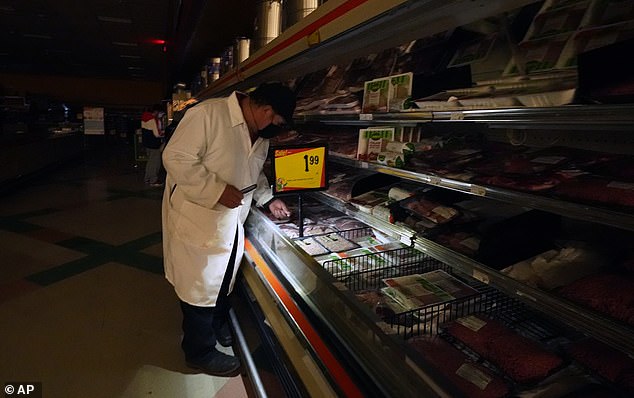
At its peak, four million people were left in the dark for 70.5 hours after 365 generators were taken offline due to the severe weather
At the time, officials said the power outages were a “last resort to maintain the reliability of the electrical system as a whole.”
It meant that in some cases Texans were left without power and heat for days as the mercury plummeted to a low of -20F.
People who fled to the homes of relatives or neighbors had to consider the risks of contracting or spreading the coronavirus.
The strain on the power grid is partly attributed to Texas’ growing population, which has grown by a fifth since 2010.
ERCOT data shows usage reached record levels this summer and continues to set new records every month.
Efforts to keep pace with increased use have led to green energy developments such as solar and wind farms, but these are weather dependent.
Wind turbines, which provide a fifth of the state’s energy, froze amid the bitterly cold temperatures.
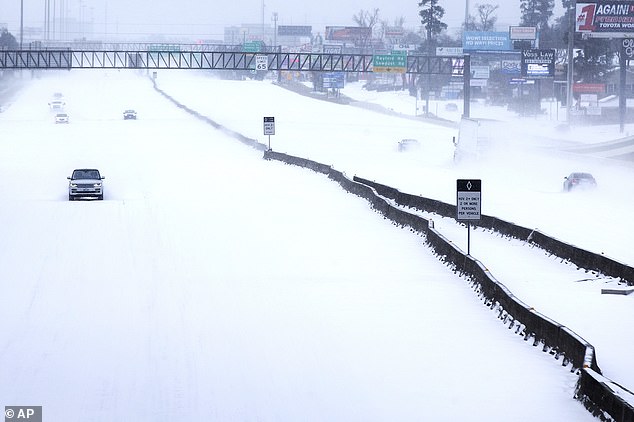
Snow covered Texas roads nearly three years ago, when millions of people were in darkness for more than 70 hours
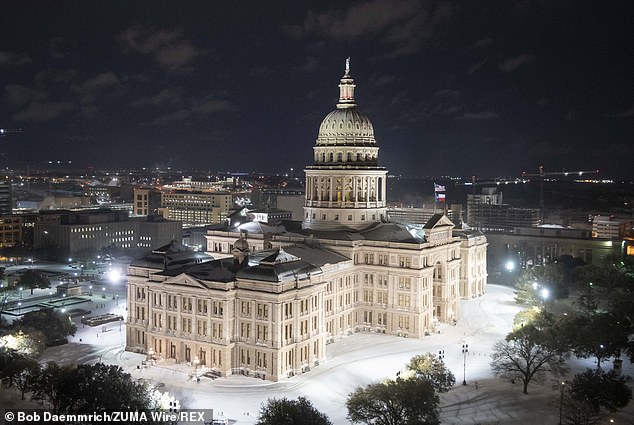
A rare winter snowfall of at least half a foot hit central Texas as the State Capitol in February 2021
This, combined with the lack of new natural gas plants that can produce energy on demand, and the weather created a perfect storm that left millions of people without power and water.
“The resource mix changing on the grid is not really helping to meet the growing peaks in winter,” said Pablo Vegas, CEO of ERCOT. Boston sphere.
‘There is therefore a growing risk profile that we have to deal with. ‘
However, power outages occurred throughout the energy sector.
As wind turbines and solar panels froze, a major nuclear power plant lost half its production, and there were massive disruptions in the coal, oil and natural gas sectors.
Oil production in the country’s largest oil-producing state fell by more than 2 million barrels per day due to the storm, sending prices soaring to $60 per barrel for the first time in a year.
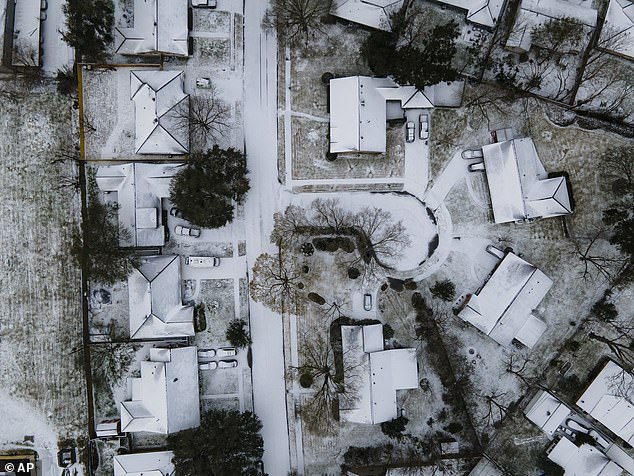
Homes in the Westbury neighborhood are covered in snow in Houston, Texas, when the storm hit in February 2021
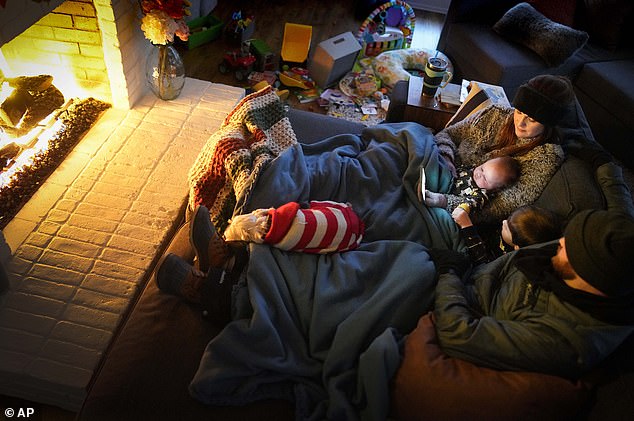
Power outages occurred throughout the energy sector. As wind turbines and solar panels froze, a major nuclear power plant lost half its production, and there were massive disruptions in the coal, oil and natural gas sectors.
Meanwhile, demand soared as people used to the mild Texas winters turned on the heat.
ERCOT Board Chair Sally Talberg called the February 2021 situation a “humanitarian crisis.”
In the wake of the deaths, new protocols around extreme weather for power plants were adopted, including encouraging them to maintain a backup supply in case of emergency.
But the situation could repeat itself again this year after experts revealed the El Niño weather pattern is expected to reach ‘historic’ levels.
During such winters, more snow falls than average in Texas and the Midwestern US and western states such as Colorado, New Mexico, Arizona and Utah.
A report from the North American Electric Reliability Corporation found that “much of the North American bulk energy system is at risk of insufficient electricity supply during peak winter conditions.”
